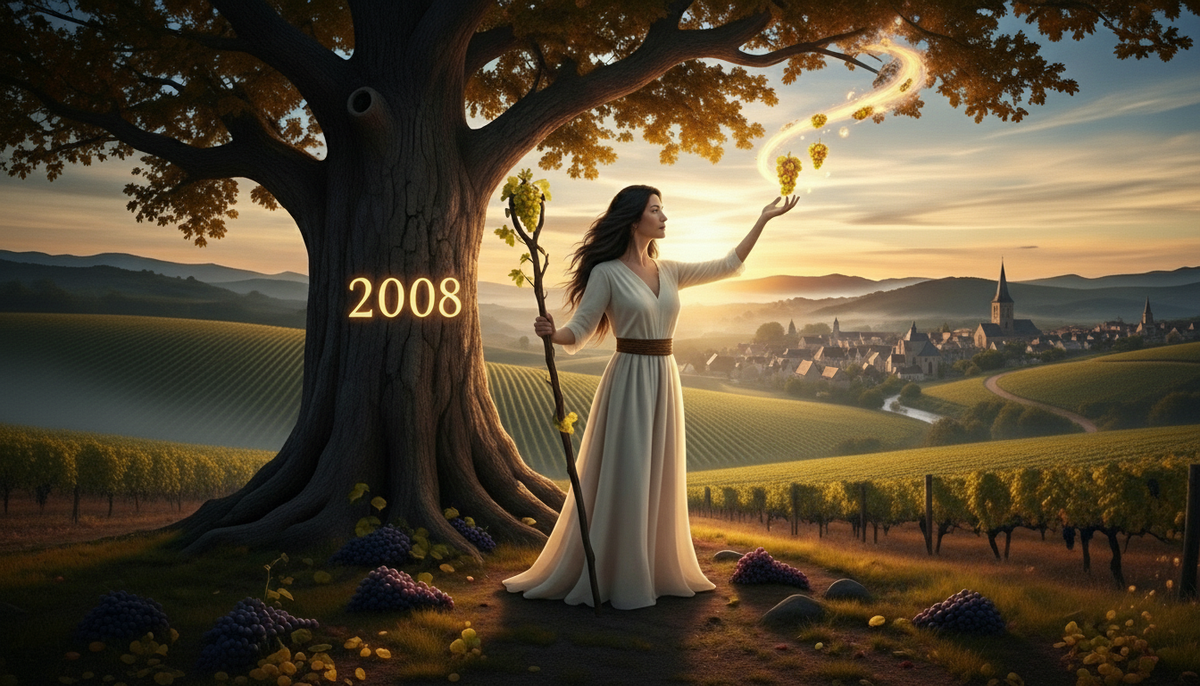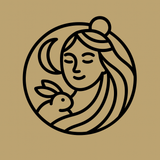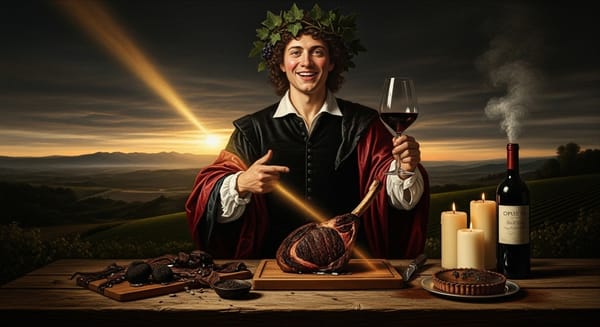2008 Champagne: Moonlit Tension That Glows for Decades
Champagne 2008 vintage glows with rapier acidity, chalk purity and featherweight power. Get tasting notes, terroir guide from Côte des Blancs to Aube, producer picks, and cellar timing—why low dosage and blocked malo make each cru shine long into the future. Worth aging? Yes.

Lemon light etched on cold chalk—can tension feel like silk?
Overture of the Skies
The Champagne 2008 vintage opened with a cool, cloudy spring that pinched flowering and trimmed yields. Summer ambled along, overcast and measured, keeping sugars in check while preserving a neon thread of acidity. Then, September flipped the switch: long, luminous days and crisp nights dried the vines, ripened skins, and locked in purity. Growers picked slowly under faultless skies, choosing ripeness berry by berry, all chasing the same razor-bright ideal: fruit just ripe enough to sing, yet shy of excess. People and place are bookends, and the rich core between them is this wine’s story.
Featherweight Fire
Among modern greats, 2008 sits where featherweight intensity meets steely resolve. High natural acidity pH often below 3.0 promises half-century aging, while low-dosage and blocked-malo choices amplify site transparency. That clear September etched detail into every parcel: Avize whispers differently than Ambonnay because nothing is masked. Critics from Jancis Robinson to Richard Juhlin call the year “electric,” a consensus rarely granted.
Sword & Silk on the Palate
Imagine a sword sheathed in sablé: rapier acidity slices first, then lees-creamed mid-palate cushions the cut. Aromatics hover between yuzu zest, green-apple skin, and a faint sea-spray of chalk dust. Secondary layers—croissant crumb, candle-lit brioche—float up with warmth. Chardonnay pirouettes; Pinot keeps time with a red-currant drum. Meunier, the band’s wild child, smuggles orchard spice into the mix. Texture is key: bubbles feel laser-beaded, yet the finish unfurls like velvet pulled taut. Listen closely and you’ll hear a quiet hiss—CO₂ whispering through limestone corridors—before the wine snaps shut, asking you back in ten years.
Four-Part Terroir Fugue
• Côte des Blancs: All about cut. Avize gives lemon-pith and powdered chalk; Le Mesnil shows sterner limestone, almost crystalline; Cramant leans creamier, a puff of sabayon over citrus.
• Montagne de Reims: Pinot Noir drives. North-facing Verzenay Verzy deliver black tea, cranberry, and graphite; sun-bathed Ambonnay Bouzy offer deeper raspberry and roast hazelnut, yet 2008’s cool heart keeps them feather-light.
• Vallée de la Marne: Meunier in Cumières, Dizy, Mareuil lifted the mid-palate—think pear tart and white pepper—proof that the variety shines when acids are high and sugars modest.
• Côte des Bar — Aube: Kimmeridgian snap echoes Chablis; small growers like Marie-Courtin bottled lightning—pure lime, nettle, and a flinty finish.
Dark horse: north-facing plots above 200 m in Villers-Marmery held laser-line freshness that still feels refrigerant today.
Dialing the Moonlight
— Blanc de Blancs amplify 2008’s icicle clarity; many skipped malolactic to keep LEDs bright.
— Blanc de Noirs harness taut red fruit, often softened by partial malo for roundness.
— Assemblage cuvées walk the tightrope: tiny dosage 3–5 g/L lets chalk and citrus co-lead.
— Time on lees: Prestige bottlings stayed a decade or more before disgorgement; late releases now carry candle-lit pastry tones without dimming the neon core.
— Fermentation vessels: More than usual saw old barrels—Krug, Bollinger, Vilmart—adding whisper-smoke and grip, while stainless-only wines remain diamond-cut. Each dial—malo, dosage, tirage—nudges line, cream, length, and sparkle.
Voices of 2008
Icons
• Cristal 2008: diamond-sharp, zero-gravity length.
• Dom Pérignon 2008: linear, cool, almost architectural.
• Bollinger La Grande Année 2008: muscular yet disciplined, oak in a tuxedo.
Value Plays
• Charles Heidsieck Millésimé 2008: pâtisserie nose, bargain depth.
• Billecart-Salmon 2008: jasmine lift over chalk core.
• Larmandier-Bernier Terre de Vertus 2008 BdB: saline focus, low dosage.
Wild Cards
• Grower cuvées from the Côte des Bar Marie-Courtin Résonance 2008 show alpine herbs over lime.
• Ultra-low-dosage releases like Leclerc Briant Abyss 2008 bottle the vintage’s nerve.
Timekeeper’s Ledger
• Early Charm now–2029 — Citrus spark, brittle chalk, hint of pastry; pour in gentle tulip stems at 52–55 °F and give just a brief swirl.
• Sweet Spot 2030–2048 — Acidity and mousse knit; brioche, hazelnut, white truffle appear; same glass at 54–57 °F, 15‑minute aeration tops.
• Marathon 2049+ — Tertiary saffron, baked quince, candle wax; bubbles subtle, texture silken; wider tulip around 56 °F, no aeration—let it evolve in glass.
Bottled Moonlight: Encore
2008 Champagne is bottled moonlight—cool, bright, endlessly reflective. Each cork you pop is a time-capsule of tension meeting quiet grace: the rapier spark of yuzu and chalk giving way to soft candle-lit lees. Wait a decade and the same bottle hums deeper, like string-lights dimmed at dusk—saffron, hazelnut, whisper-fine mousse. What you’re buying isn’t just liquid or year; it’s the discipline of growers who harvested patience, the geometry of limestone, the long game of slow bubbles outliving hot takes. Own a few, track them over winters, share the changes with friends. Stories age better than scores—and this vintage is pure narrative fuel.





